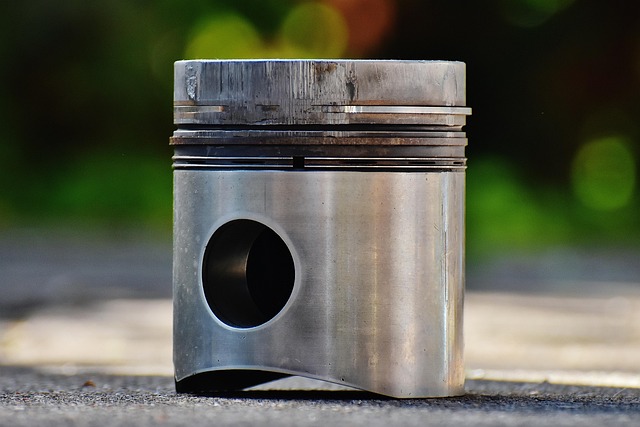“Discover the straightforward process of registering your car in California with our comprehensive guide. Learn how to navigate the DMV’s VIN (Vehicle Identification Number) verification step, a crucial part of the registration process. We’ll walk you through gathering essential documents, provide a detailed, step-by-step registeration guide, and offer solutions for common issues encountered during this time. By the end, you’ll be prepared to complete your vehicle’s registration smoothly.”
- Understanding the DMV VIN Verification Process
- Gathering Required Documents for Car Registration
- Step-by-Step Guide to Registering Your Vehicle in California
- Common Issues and How to Resolve Them During Registration
- Post-Registration: Important Steps to Take Next
Understanding the DMV VIN Verification Process

When registering your car in California, understanding the DMV’s Vehicle Identification Number (VIN) verification process is crucial. This step ensures that your vehicle meets all necessary safety and emissions standards before it can be officially titled and registered. The DMV will inspect key components of your car using the unique VIN as a reference point for cross-checking against manufacturer data and recall records. This meticulous process aims to prevent unsafe vehicles from hitting the road, protecting both drivers and pedestrians.
The convenience of a mobile vin inspection or using a vin inspection service can significantly streamline this process. These services, often provided by specialized mobile vin verifiers, allow you to complete the VIN verification outside of traditional DMV locations. This flexibility is particularly beneficial for those with busy schedules or limited mobility, ensuring that registering your car remains a hassle-free experience in California.
Gathering Required Documents for Car Registration

Before you start the registration process, ensure you have all the necessary documents ready. The California Department of Motor Vehicles (DMV) requires specific paperwork for a smooth car registration. Topping the list is proof of ownership, typically a vehicle title, which must be signed and dated by the seller if it’s a used car. Additionally, a current and valid insurance card or proof of financial responsibility is essential to show that your vehicle has the required coverage.
For your convenience, consider using a mobile vin verifier for a quick and efficient vin inspection. This service enables you to verify your vehicle identification number (VIN) through an app, which can then be submitted alongside your application. Other documents to gather include a valid driver’s license or state-issued ID card, proof of residency (like a utility bill), and any applicable fees. Don’t forget that a completed DMV form is also required for registration.
Step-by-Step Guide to Registering Your Vehicle in California

Registering a car in California involves several straightforward steps, ensuring your vehicle is road-ready and legally compliant. Here’s a step-by-step guide to navigate through the process smoothly. First, gather essential documents including your driver’s license, proof of insurance, and proof of ownership. Next, visit the California Department of Motor Vehicles (DMV) website to initiate the registration process online, which simplifies matters significantly.
Once online, locate the section for vehicle identification number (VIN) verification, a crucial step that ensures the vehicle’s authenticity. For added convenience, consider using a mobile VIN verification service which allows for on-the-go inspections and can help streamline this phase. After completing the online application, schedule an appointment at your nearest DMV to provide any remaining documents and undergo a final inspection. This might include a physical examination of your vehicle, so ensure it’s in good condition. With all paperwork in order, you’ll be on your way with a fresh registration and plates attached.
Common Issues and How to Resolve Them During Registration

Many car owners in California encounter issues during the registration process, often stemming from problems with document preparation or the vehicle’s history. One common challenge is ensuring accurate and timely DMV VIN verification. This step is crucial to establishing the vehicle’s authenticity and ownership. If you face difficulties with this process, consider using a mobile vin verification service that can expedite the inspection.
To resolve other common problems, such as missing documents or discrepancies in vehicle records, maintain thorough organization and record-keeping. Keep all required paperwork in one place, including registration forms, title documents, and any maintenance records. If you’re unsure about any aspect of the process, consult a mobile vin inspector who can guide you through and ensure your car’s registration goes smoothly. This proactive approach will help prevent delays and make the registration experience less stressful.
Post-Registration: Important Steps to Take Next

After successfully registering your car in California, there are several important steps to ensure a smooth ownership experience. One crucial task is to complete a DMV VIN verification process, which ensures that your vehicle’s unique identification number (VIN) is accurate and matches the make, model, and year listed on the registration documents. This step is essential for both safety and legal compliance.
Additionally, consider utilizing a mobile VIN verifier service for convenience. These services allow you to complete a quick and easy vin inspection right from your location. By staying proactive with these post-registration checks, you can ensure your car’s history is transparent, and any potential issues are addressed promptly.
Registering a car in California is a straightforward process that requires attention to detail. By understanding the DMV VIN verification process, gathering the necessary documents, and following a simple step-by-step guide, you can efficiently complete your vehicle registration. Be prepared to encounter common issues during the registration, but rest assured, these are easily resolvable. Once registered, don’t forget the important post-registration steps to ensure your car’s legal status remains up-to-date and current.



